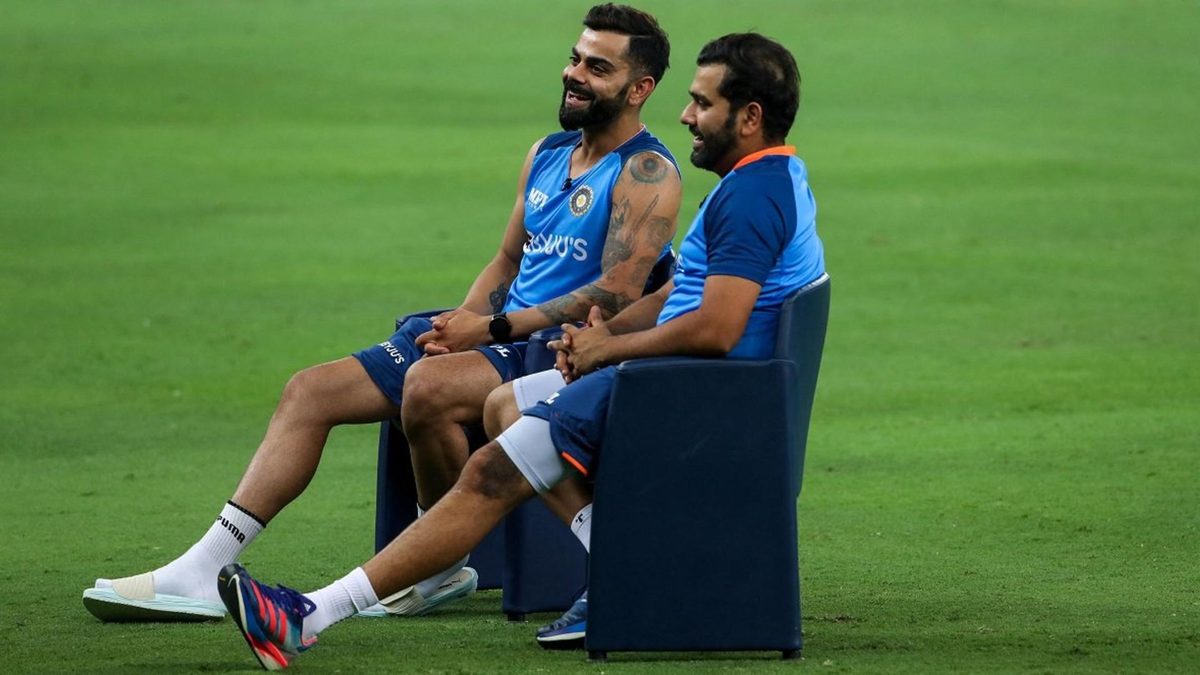
Neither Virat Kohli nor Rohit Sharma has played for India in T20Is since last year’s World Cup semi-final. What does the future hold for them in the shortest format?
Between MSK Prasad and Ajit Agarkar’s stints as chair of selectors, the BCCI has developed a curious habit. Barring the odd exception, the squads for the senior men’s team was often announced through press releases or social media posts, with no accompanying press conference.
In other words, the selection panel’s decision was informed, but almost never explained.
Let us leave the rights or wrongs of that for another day. For now, let us focus on how this curious strategy has enabled the selectors to avoid a crucial question: do Rohit Sharma, India’s official captain across formats, and Virat Kohli, his predecessor – the two most high-profile contemporary Indian cricketers – feature in their T20I plans?
Neither is injured. We know that, for they keep playing the other formats. There is no official news of them being dropped. They simply did not feature in India’s eight scheduled T20Is India between August 3 and August 23 across the West Indies, the USA, and Ireland.
It does make sense to rest the two senior men ahead of the 50-over World Cup. One can also see why India had rested them for the New Zealand tour immediately after last year’s T20 World Cup.
None of that, however, explains why they missed both T20I series at home earlier this year, against Sri Lanka and New Zealand.
In all, India were scheduled to play 17 T20Is across five series in four continents since that T20 World Cup. Neither Kohli nor Rohit featured in any of the five squads, but have – barring an injury to Rohit in Bangladesh – regularly played the other two formats. as well as in the IPL.
One may again argue that every Test match India plays is part of the World Test Championship, every ODI is preparation for the World Cup, and the IPL is, well, the IPL; and if Rohit and Kohli had to prioritise in a non-T20-World-Cup year, they would have chosen Tests, ODIs, and the IPL.
There is also the bit about India already having qualified for the 2024 T20 World Cup, and the fact that the focus will switch to the shortest format after the upcoming ODI version.
But then, had Rohit and Kohli been in contention for the T2o World Cup, surely picking them for the matches in the West Indies and the USA – venues of the tournament – would have been a logical decision.
And while workload management is important, it cannot be denied that with no T20Is lined up until the end of the ODI World Cup, Kohli and Rohit will go without a year in the format in the 19-month period between the two T20 World Cups.
As captain, Rohit’s case is perhaps the more interesting of the two. When Rishabh Pant and Hardik Pandya led India in T20Is in 2022, they were perceived as stopgap options who would relinquish the role when Rohit returned, as he did for that year’s Asia Cup and the World Cup.
The current stint, however, seems different. There has been no official announcement, but Pandya – whom the BCCI had officially named ODI vice-captain despite erstwhile deputy KL Rahul’s presence in the side – seems to have taken over the mantle in the shortest format.
Over the past two years, the BCCI has silently phased out senior cricketers. Rahul Dravid informed Wriddhiman Saha about the team management’s decision. Ishant Sharma was never considered in Jasprit Bumrah’s absence. The same may be true for Cheteshwar Pujara. An overall lack of clarity has led to speculation around the future of these stalwarts.
Rohit, India’s first-choice Test opener, an all-time great ODI batter, and captain in both formats, is 36. Kohli boasts of two hundreds in his last four Test matches, is a contender for the greatest batter in ODI history, and is set to finish with the most hundreds in the format. He will turn 35 during the upcoming World Cup.
They are ageing, and there will be a time when they will move away from cricket, format by format. They are certainties in Test cricket and ODIs, and the IPL takes up a sixth of their playing days, which makes T20Is the obvious place to start with.
In 2022, India were eliminated in the semi-finals of the T20 World Cup. In 2021, they had not even gone that far. Across the two editions, they made several sub-par scores – 151-7 against Pakistan, 110-7 against New Zealand, 133-9 against South Africa, 168-6 against England – and lost all of them.
The Indian selectors had retained Rohit and Kohli despite the 2021 debacle, but after India’s anchor-heavy top-order failed yet again, in 2022, one cannot blame them from wanting to move on. There is, after all, no dearth of talent.
Kohli or Rohit missing five T20I series could have been a decision by the selectors. It might have been their own accord. Their absence coinciding with the non-press-conference era certainly added to uninformed speculations.
Whatever the truth is, we shall learn more of it once the focus switches to T20Is after the World Cup.








